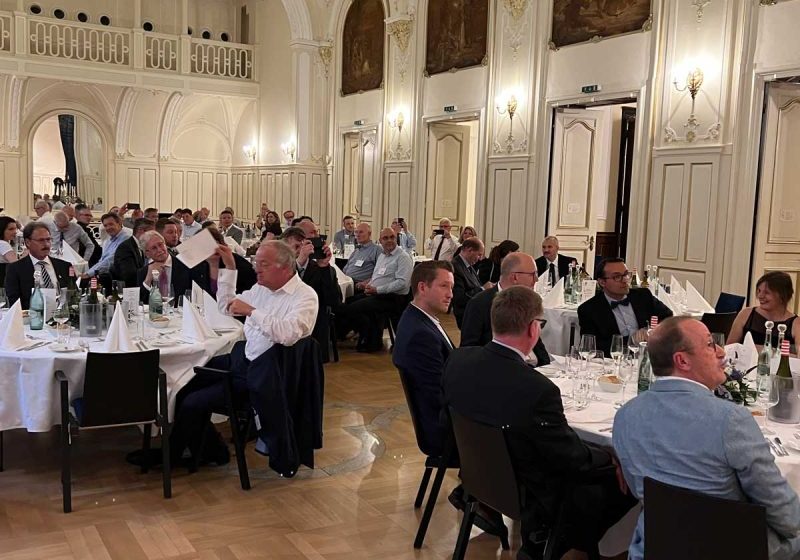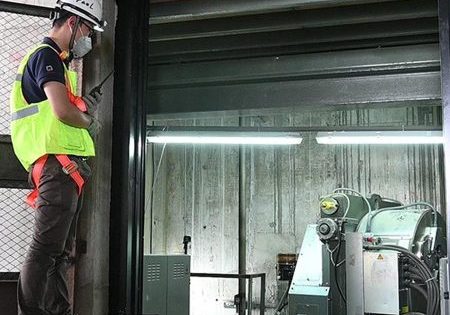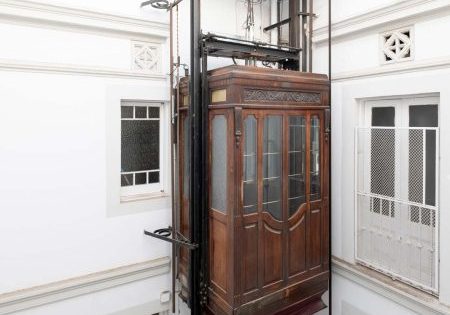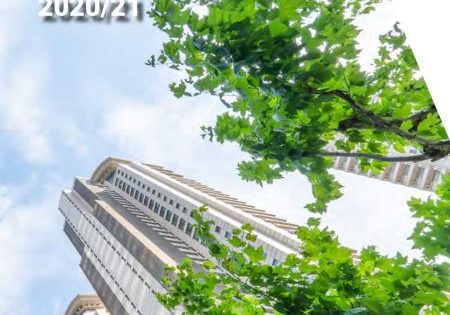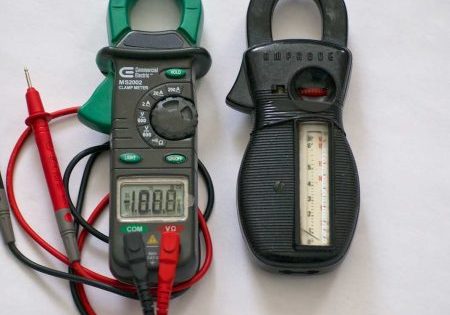IAEC Forum 2022
Aug 6, 2022
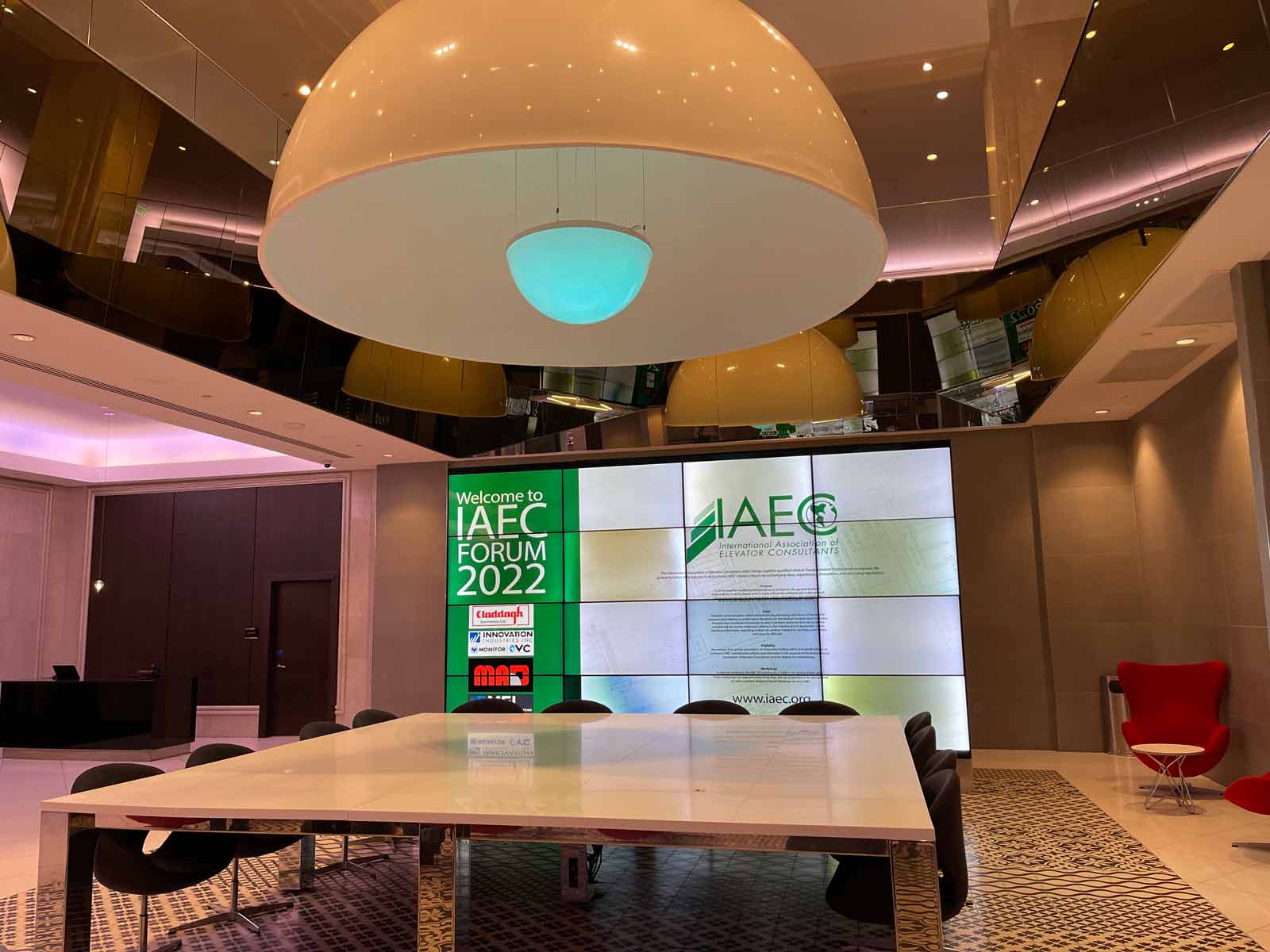
Annual event comes to Minneapolis: City of Lakes, the Twin Cities, and the birthplace of Prince and the automatic elevator door.
“Are we going to let the elevator bring us down … O, no, let’s go!” When Prince sang these lyrics in 1984 in the song “Let’s Go Crazy” — the lead track on the iconic “Purple Rain” album by Prince and The Revolution — he probably never considered that one day Minneapolis, the place where he was born, would be the location of an elevator conference for consultants in 2022. But that’s exactly what happened as the International Association of Elevator Consultants (IAEC) Forum 2022 came to the Royal Sonesta Minneapolis Downtown for a few days in May.
And even though no one seemed to go too “crazy” (or partied like it was 1999), there was a buzz of excitement in the group all the way from the opening reception to the closing meeting a few days later.
Monday, May 23
An IAEC board meeting was held during the afternoon as other participants began to arrive in anticipation of the week’s events.
Tuesday, May 24
Tuesday morning kicked off with the NAESA International Code Update Seminar by NAESA International Education Director Jack Day for 0.8 units of continuing education (CE) credit.
At the same time, vendors began setting up their booths in time for the opening night’s event. Forum registration, as well as the Opening Night Reception and Elevator Escalator Safety Foundation (EESF) Silent Auction and Vendor Show, kicked off at 6 p.m. With an open bar and heavy hor d’oeuvres, including wings and some extra-spicy sausage at a cutting station, as well as macaroons and other delightful desserts, the lively conversation began and never seemed to stop. Consultants and vendors made their way around the room to check out the booths and bid on silent auction items to benefit EESF, as well as catch up with old friends and make new connections.
Silent auction items ran the gamut from gift cards to a levitating moon lamp and a Meta Quest 2 virtual reality system. In all, US$3,083 was raised for EESF. For some, the party continued late in the hotel bar or other places close by, while others tucked in early in advance of the full days ahead.
Wednesday, May 25
Breakfast began bright and early at 7 a.m., giving participants another chance to check out the vendor booths before the sessions began.
The IAEC Forum opened with Sheila Swett, executive director, and Nick Montesano, president, welcoming the group. Montesano applauded the level of participation, saying, “Any organization is only as good as its membership; it’s great to see the momentum keep going after last year.” He acknowledged that the industry “has had its ups and downs,” but said he’s confident it will be back as it was in a few years. His welcome then turned to the future and engaging the next generation, particularly on the consulting side. He then encouraged the participants to think about how and what IAEC can do to better serve its members as an organization.
Swett then explained that the purpose of the Forum’s offering of “gathered time, education, food, a little drink” is to build relationships. “We put this on so we can meet our vendors and know them by name and so you know who you need to call when you need to call them,” she said.
She then introduced new EESF Executive Director Jason Fisher, who spoke briefly about his background, EESF’s new website and acknowledged that EESF Program Director Laurie Dueitt is celebrating her 24th anniversary with the foundation. About the future, he added:
“What excites me about this organization is that there is enormous potential for growth and doing good. I think we are pointed in the right direction. I know we have great support out in the community, and we’re going to do some new things over the next several months. What the foundation needs is your feedback about what safety means to you.”
Next up, Elevator World Vice President of Sales/Marketing Brad O’Guynn presented what Swett described as one of her favorite parts of the forum: the State of the Elevator Industry. The information came from a recent EW North American survey and showed that GDP is going back up and construction is on the rise, which is good for the vertical-transportation (VT) industry. He shared that there has been an increase in mechanics’ salaries, and the U.S. will need 1 million new construction workers in the next two years. Suggestions from survey respondents on improving the industry called for embracing technology more, national A17 adoption and decreasing accidents. O’Guynn also shared the fun fact that automatic elevator doors originated in Minnesota.
Officers and Directors

Officers
President: Nicholas Montesano
Vice President: Bob Dieter
Secretary: Paul Rosenberg
Treasurer: Tim Marshall
Directors
Regional
Eastern: Joseph Caracappa
Southern: John Koshak
Central: Daniel Swett
Western: Michael Fagan
International: TAK Mathews
At Large
Richard Blaska
Matt Lawrence
D. Hanie Lancaster
John Rearick
Gregory Sacks
The next presentation, “Establishing an Oil Analysis and Maintenance Program to Extend the Life of the Oil and Hydraulic Components in Hydraulic Elevators” was presented by Michael Johnson with Elevator Oil Solutions, who confessed, “I will talk for hours on oil. Why? I don’t know. It interests me.”
Johnson discussed how 80% of failures are caused by dirty oil. Previously, the only real solution was to replace the oil, but approximately 13 years ago, the president of Gorman Company Inc. followed through on an awareness that oil could be monitored and cleaned and began an oil analysis program. His presentation provided pictures of dirty versus clean oil, showing how it can be cleaned using a filtration system.
“We’ve thrown away so many gallons of oil, but all we needed to do was clean it,” Johnson said. “You can look at the oil and figure out what’s wrong with the elevator.”
After a break, Michael Ryan with The Peelle Co. presented “Vertical Door Styles and Applications.” Ryan showed pictures and videos giving the details on various door and gate options, saying, “Freight elevators are still relevant; there is still a need for elevators with vertical doors.”
More than once during his presentation, he told the consultants, “Most of what you see that is non-standard, you people drive. Your calls helped direct some of this.” He also said that the role of the consultants in the decision of what type of door is needed is a big one: “You’ll be the one to figure out what’s being moved, and you make the decision if it needs a freight elevator or not.”
The next presentation was brief as Jeff Johnson with Elevator Systems (ESI) said his presentation on door lock monitoring didn’t get transferred to the memory stick. He answered a few questions and took emails from participants to whom he said he would send the presentation. So participants got another unexpected break before “Future Proofing your Telephony: Cellular Explained” was presented by Kevin Rippentrop, partner channel director with Kings III Communications. This presentation also offered NAESA credit.
Rippentrop went over the technology with the end of POTS (Plain Old Telephone Service) lines and the pros and cons of options, including VoIP and cellular. He said that cellular is a better alternative because it provides a fast connection point, allows for faster dispatch and is cost effective. He said Kings III is certified on the FirstNet network, which is a nationwide communications network built with and for first responders and public safety personnel after 9/11.
One of his key points: “There’s a lot to consider when thinking about code requirements and how to deliver a signal to your elevator. Security and prioritizing the connection to the elevator should be paramount.”
After an afternoon break, Day discussed the International Building Code (IBC) 2018 code update, and his presentation also provided NAESA credit. He let the group know about a website where they can find the building codes for any state/jurisdiction, as well as any amendments. He explained how to read the 2018 IBC code, including how to tell what the various markers (vertical lines, shading, etc.) used to indicate changes mean.
He emphasized the importance of checking definitions as “it may be different from what you think.” He went over a few specific definitions (atrium, elevator group, impact load, means of egress, mechanical-access open parking garages, penthouse, etc.) as examples of this.
Last up for the first day was “The A, B, C, and D’s of Ride Quality,” presented by Mark Wilson from ELSCO, which focused on roller guides. He went over how the goal of elevators is to move individuals from point A to point B as safely, efficiently and comfortably as possible. He discussed the evolution of elevator components, but said that “roller guides have changed very little because they continue to work.” He said there is value in choosing the right guide and defined what to look for in a quality guide: strength, durability, ride quality and adjustability.
After the last presentation, participants got a short break before heading out for the night’s off-site activity at Brit’s Pub just a few blocks away from the hotel. There was also a shuttle for those who didn’t want to brave the cooler temperatures and steady sprinkle of rain. The bar was full when the IAEC group arrived, but we were whisked up to our own private room upstairs with drinks and snacks ready to go before a dinner of fish and chips was served.
Brit’s Pub is “Minneapolis’s own little corner of the U.K.,” and the sprawling establishment also offers rooftop lawn bowling. The weather was not fully cooperating, but the bravest of the group ignored the elements to take on a few games. It was a unique and fun way to end the day.
Thursday, May 26
The second day of the conference kicked off bright and early again with breakfast and the ability to visit more vendor booths before the first presentation by Steve Reich-Rohrwig with MAD Elevator: “2019 Visual/Text Communication – 1.5 years After Adoption.” This presentation also provided NAESA credit.
The presentation reviewed code updates that now require two-way voice communication, two-way visual communication and one-way video communication. Reich-Rohrwig discussed some of the fees and why they are there, saying that you want someone to still be there in 20 years to answer the calls. “The biggest thing is peace of mind,” he said. He talked about the importance of the camera placement and touched on such elements as you get the service you pay for, monitoring systems should be separate from maintenance, cybersecurity matters and future proofing your elevator (VoIP and cellular.) He closed with, “We can really do anything. The sky’s the limit. We can dream up anything.”
Next up was “REHAB or MOD” presented by Montesano, DTM Inc., and Nam Nguyen, Vantage. The pair praised each other’s efforts in the presentation: Montesano said Nguyen did most of the legwork on the PowerPoint, and Nguyen said he’s likely to push new products so Montesano would keep him honest. They went over a variety of scenarios and certain elevator parts, discussing what should be replaced and what can be modernized. They also emphasized that some of the old rules/adages may not apply anymore. After running through the slides, they opened the room up for a larger discussion.
After a quick break, Jonathan Latham with Janus presented “Safety Edges.” He went over the 2019 code requirements for door protection and showed variations in 2D and 3D detection. He said the A17.1 2019 update is the “first code in the world” to require 3D and went over the safety requirements, including the target size, speed and detection zone.
Lunch was next, giving attendees one last opportunity to visit the vendor booths before the end of the show. After lunch, Swett with Swett & Associates presented “Them’s the Brakes,” along with special guest Daniel Swett. They discussed four incidents regarding brakes: one at a hotel, one at a university (where Daniel Swett was actually on top of the car when it happened), one at a hospital and one at an office building. The two went over the failure, the issues, their level of involvement (or not) and the lawsuits for each.
This presentation was the last of the day before the IAEC General Membership Meeting. Shelia Swett and Montesano opened the meeting and quickly passed the minutes from the group’s previous meeting in New Orleans. The meeting moved pretty quickly with a few of the officers not being able to attend and brief summaries of their reports from a previous virtual board meeting given.
Montesano then said he was excited about last year’s event and then being able to get back in person again this year, and he thanked everyone for coming. He said the group has been discussing ways to attract new and younger members.
During her executive director report, Swett mentioned how the decision to purchase their own projectors and AV equipment has already saved the group money. The other committee reports were also brief. The group did report fivenew professional members. Another item of note is an effort to update and improve the website. This would include an updated directory, new photos, social media opportunities and so on. The members were encouraged to submit ideas.
The discussion also focused on upcoming events of which the group would be a part. TAK Mathews, International Region-At Large officer, discussed the importance of having a presence at international events and mentioned that he will be hosting one in India in December. He invited the group and their families to attend.
The list of nominations of officers and regional directors had been given out at the start of the meeting and all were approved. These officers were then sworn in, and the meeting was called to a close.
The IAEC 2023 Forum will be held in Las Vegas, Nevada, the week before Memorial Day. In 2024, the group will be a part of the United convention.
Get more of Elevator World. Sign up for our free e-newsletter.


